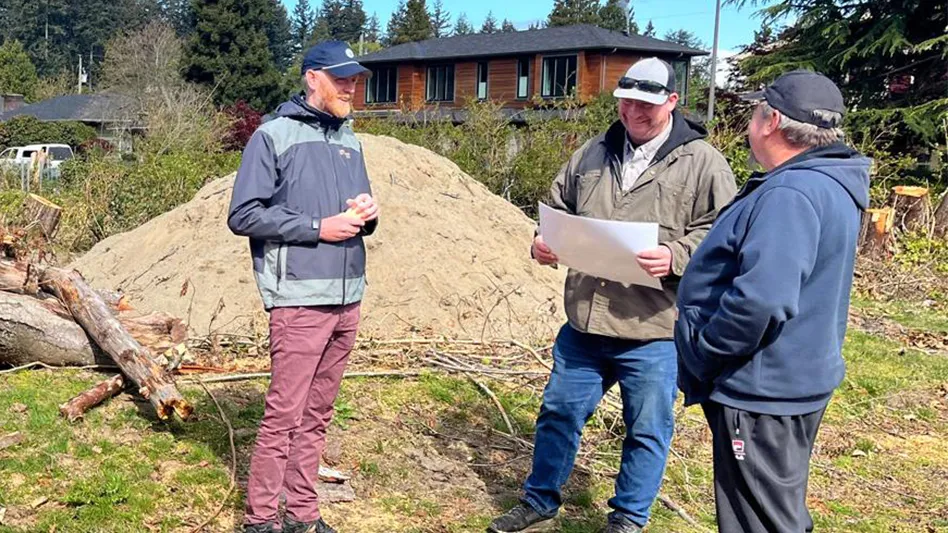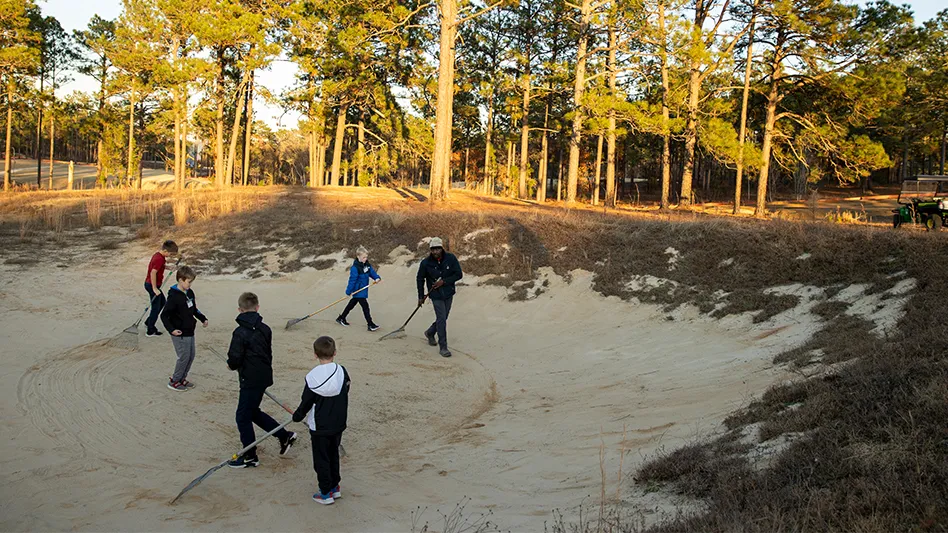


BUDGET
The average non-capital operations budget is increasing from $697,000 to $750,000, a robust and encouraging 13.2 percent increase. For those wondering, the average maintenance budgets in 2012 and 2013 were $651,392 and $622,500, respectively. More than half of superintendents (52 percent) will see their maintenance budgets increase in 2016 while only 16 percent will be forced to trim expenses.
Of the 18 budgetary line items annually included in the survey, 12 will experience spikes in 2016, including all forms of pesticides and fertilizers. Equipment suppliers should be primed for a solid 2016. The biggest budgetary rise will be in mowing/cultivating equipment, with the average course spending $42,800 on iron in 2016 compared to $31,300 in 2015.
Receiving the necessary financial resources to produce a quality product isn’t a major concern among superintendents entering 2016. Forty-three percent of superintendents say they are “very confident” the maintenance department will have the financial resources to succeed in 2016. Only 4 percent say they are “not confident at all.”
Spending on capital projects should be conservative in 2016, with the average facility devoting $94,500 to course improvements, a 31.5 percent decrease over 2015. Only 3 percent of superintendents indicated their facilities will spend more than $500,000 on capital improvements this year.
Budget changes
2015 vs. 2016

Confidence maintenance department will have financial resources to succeed in 2016

Budget chart

Projected non-capital operations budget, including labor and overhead but excluding water costs, for 2016

Projected capital budget for 2016

PERSONAL
The average superintendent has held his or her current position for 12.2 years while only 9 percent have been fired for job performance reasons. Long tenures at a facility aren’t anomalies, as 17 percent of superintendents have held their current position for 20 or more years. The survey also suggests most superintendents are satisfied with their respective jobs. If given a career mulligan, 76 percent said they would still pursue a job in the golf industry.
Let’s also eliminate another myth held by those outside the industry. Superintendents don’t play golf every day. In fact, they are lucky to play once a week.
Less than one-third of superintendents (27 percent) play golf once or multiple times per week. Plenty of superintendents are watching their clubs collect dust, as 34 percent indicated they play less than monthly or never.

Years in current position

Would you still pursue a job in the golf industry

How satisfied are you with aspects of your job?

Importance of passion for career success

How often do you play golf?

FINANCES
If your facility operated at a loss in 2015, you are in the industry minority. Sixty-nine percent of superintendents reported their facility either turned a profit or broke even in 2015. The number of profitable facilities increased from 39 percent in 2014 to 45 percent in 2015. Still, superintendents aren’t ready to declare the industry has fully recovered from the economic downturn. Forty-five percent of respondents say the industry is “seriously” or “somewhat” struggling while 26 percent say the industry is “drastically” or “somewhat” improving.
How would you characterize the financial condition of the golf industry?

Was your facility profitable last year?

ATTITUDE
The grassroots of golf don’t mirror the highest level of the game, according to superintendents.
While 20-something stars Jordan Spieth, Jason Day and Rory McIlroy occupy the top three spots in the Official World Golf Ranking, the customers many superintendents are seeing at their facilities are old enough to be the trio’s parents or grandparents. Three-fourths of superintendents (75 percent) list attracting younger generations of players as their biggest industry concern for 2016. Attracting younger workers also represents a conundrum, with 42 percent of superintendents placing this task on their list of industry concerns. Other significant concerns for 2016 include rising golf course expenses (55 percent) and unrealistic member/customer expectations (42 percent).
Who’s responsible for finding younger players and workers? Facilities (79 percent), PGA (78 percent) and USGA (77 percent) are most responsible for growing the industry, according to superintendents.

Biggest industry concerns for 2016


In their words
We asked one open-ended question on the survey: If you held an industry leadership position, what would be your first order of business? Here’s a sampling of the responses we received.
- Stop promoting ridiculous ideas. Promote leagues for younger players of the game while including their mom or dad in it. We have to make golfers feel they are getting value for what they pay in money and time invested.
- Direct outreach to online booking agents. Some form of code of standards needs to be established by companies using them as we are steadily "devaluing" rounds.
- Try to find out where all those golfers went that were playing in the boom years. Have they returned to play some golf or have life changes eliminated the golf activity from their lives?
- Increasing the profile of the superintendent in the business side of golf courses.
- Trying to get all the golf entities on the same page to promote pace of play and course edict.
- Mandatory documentation of all golf maintenance practices.
- Finding a new way to introduce people to the game of golf. Perhaps by developing entry level facilities where people can be introduced to golf in a way that is neither time consuming nor expensive. The difficulty of the game, the initial cost of the game and the initial time commitment of the game all need to be reduced in order to attract more new players.
Who do you feel is responsible for growing the industry?

LABOR
Bigger maintenance budgets aren’t helping superintendents solve labor woes. An improving United States economy makes filling open positions a frustrating task for many superintendents, with 73 percent indicating that filling open positions with qualified candidates is tougher now than it was three years ago. Only 3 percent of survey respondents are having an easier time filling positions with qualified candidates.
The toughest positions to fill are the ones comprising the largest percentage of the golf course maintenance labor force: general labor spots. Seventy-three percent of superintendents list those positions as being difficult to fill with qualified candidates. A mechanic is the second most difficult position to fill, with 32 percent of superintendents indicating they have experienced finding help in their respective shops.
Conversely, when superintendents have been forced to trim crew sizes in the last three years, general labor spots are the positions most likely to be eliminated. Fifty-three percent of respondents have been forced to eliminate at least one crew position in the last three years.
Average size of maintenance staff

Positions that are difficult to fill with qualified candidates

Is it easier or harder finding quality employees now than it was three years ago?

Problems filling positions

Forced to eliminate positions in the last three years






